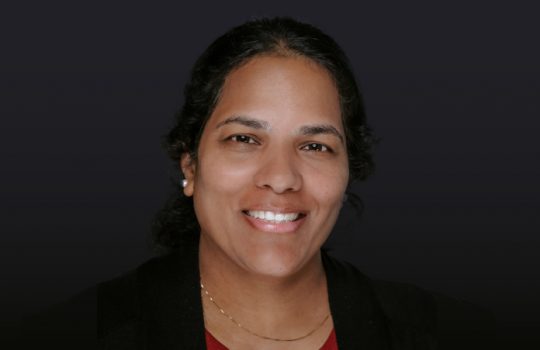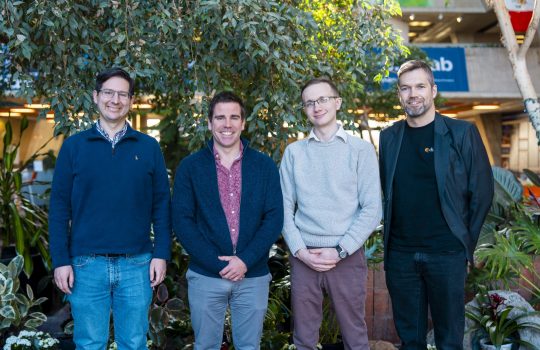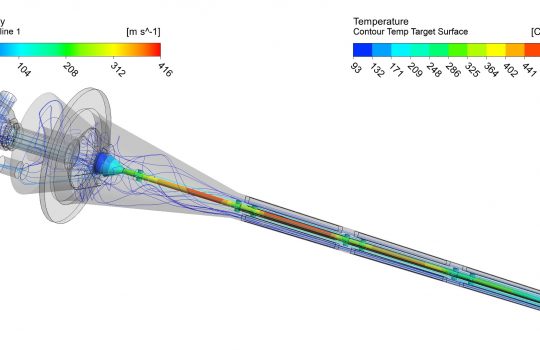INDORE, India (February 10, 2009) – The Department of Energy’s Fermi National Accelerator Laboratory in Batavia, Ill., today announced the signing of a new Memorandum of Understanding with four Indian institutions. The MOU establishes collaboration in the areas of superconducting acceleration science and technology and in research and development of superconducting materials.
“Ushering in the next generation of accelerator projects requires an international effort,” said Dr. Pier Oddone, director of Fermilab. “The collaboration between U.S. and Indian scientists helps set the stage for the global coordination required for future particle accelerators.”
Dr. Oddone signed the MOU in Indore, India, on Feb. 10 along with Dr. Srikumar Banerjee, director of the Bhabha Atomic Research Center; Dr. Bikash Sinha, director of the Variable Energy Cyclotron Center; Dr. Amit Roy, director of the Inter University Accelerator Center; and Dr. Vinod C. Sahni, director of the Raja Ramanna Center of Advanced Technologies.
The MOU focuses on the development of state-of-the-art superconducting radio-frequency cavities and associated components for future accelerators. The electric field inside a radio-frequency cavity accelerates particles as they pass through. Superconducting radio-frequency cavities create radio-frequency fields without electric resistance when cooled to temperatures close to absolute zero. Stringing many of these cavities together, physicists can accelerate particles quickly and efficiently to close to the speed of light.
“Collaboration with Fermilab has been an excellent experience for us both in terms of opportunities for scientific research as well as for building equipment for such research,” said Dr. Anil Kadokar, Secretary of the Department of Atomic Energy in India. “An added advantage is that this partnership will encourage young people to join such scientific endeavors in greater numbers. We welcome this collaboration for its mutual benefits.”
Proposed accelerators such as Project X at Fermilab will rely on the superconducting radio-frequency cavities to accelerate beams of protons. Project X would accelerate protons through an accelerator about 700 meters long, about the length of seven football fields. The accelerator would connect with the existing Fermilab accelerator complex and provide high-intensity proton beams to probe the quantum structure of the universe and its influence on matter at the smallest level.
“Superconducting radio frequency particle acceleration will play a critical role in future particle accelerators,” Oddone said. “This technology will take us to the next level of discovery in the fields of neutrino science and precision physics.”
Fermilab and the Indian institutions will work together on research, design, development and construction to develop the capability to initiate a project like Project X. The Indian institutions also plan to build a proton accelerator using superconducting radio-frequency technology.
Both Fermilab and the Indian institutions plan to develop the technical knowledge that could, in the long term, aid them in the construction of the International Linear Collider. Whereas Project X would use about 475 superconducting radio-frequency cavities, the ILC would be about 20 miles long and use about 16,000 cavities to accelerate electrons to unprecedented energy.
Fermilab has been collaborating with the Indian institutions on high-energy physics experiments since 1985, first on the Fermilab fixed-target experiment E706 and then on the DZero collider experiment. During the last two years, Indian scientists have made significant progress on the cavity and cryomodule design and fabrication work in collaboration with Fermilab.
“International collaboration not only helps attract the best minds to address a gamut of tasks, but it also is necessary to raise the resources required for mega-projects, as exemplified by the Large Hadron Collider in Europe,” said RRCAT Director Sahni. “The MOU between Fermilab and Indian accelerator labs reinforces that trend and also reflects the strong partnership that the two sides have built up over the years. I am sure that by working together we will be able to break new ground and achieve rapid progress in the use of superconductivity for accelerator science.”
For editors:
Fermilab, the U.S. Department of Energy’s Fermi National Accelerator Laboratory, located near Chicago, operates the Tevatron, the world’s highest-energy particle collider. The Fermi Research Alliance, LLC, operates Fermilab under a contract with DOE.
The Indian Department of Atomic Energy’s Bhabha Atomic Research Center, BARC, is a multidisciplinary organization pursuing comprehensive research and development programs for harnessing nuclear energy. The center’s R&D efforts concentrate in the fields of nuclear sciences, engineering and technology, basic sciences and allied fields. The center gears its efforts toward the use of atomic energy for power generation and the application of radiation technology in the areas of agriculture, health care and industry.
India’s Department of Atomic Energy established Raja Ramanna Center for Advanced Technology, RRCAT, to expand the activities of researchers at the BARC in the fields of lasers and accelerators. RRCAT operates two light sources. In April, 1987, it became an independent unit of the Department of Atomic Energy.
Variable Energy Cyclotron Center, VECC, is a premier R&D unit of India’s Department of Atomic Energy. The center is dedicated to carrying out research and development at the forefront of the fields of accelerator science and technology, nuclear science, material science and computer science and technology. VECC operates several accelerators, including a superconducting cyclotron.
Inter University Accelerator Center, located in New Delhi, India, is an autonomous research facility of the University Grants Commission. The center focuses on low-energy nuclear physics, materials science and radiation biology and chemistry. It operates a superconducting linear accelerator and a complete superconducting accelerator development infrastructure.



